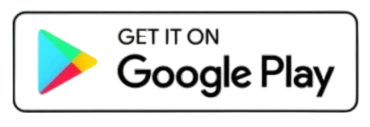How Fashion Inspiration Evolves Through Social Media
Best Fabric Types for Fashion: AI Color Theory Tips in 2025


Introduction: Why Fabric Still Rules in a Digital Wardrobe
You’ve perfected your color palette, scored the trendiest fit, and know which silhouettes flatter your body. But when you slip into that “perfect” outfit — something still feels off. Sound familiar?
Most people overlook the one styling element that makes or breaks the whole vibe — fabric.
Fabric is more than a piece of material. It’s the difference between a crisp white shirt that keeps its shape through a long day — and one that clings, wrinkles, and ruins your mood. It’s the difference between a linen co-ord that feels breezy in summer — and synthetic pants that leave you sweaty by lunchtime.
In the AI styling era, fabric is no longer just a designer’s choice — it’s a data point. With Glance AI, your wardrobe decisions are smarter: the app considers your comfort, lifestyle, color vibe — and chooses fabric that feels right for you, not just looks good on screen.
Why Fabric Types for Fashion Matter — The Basics

Fabric is the backbone of style. While trends come and go, textiles hold your look together (literally). Here’s why it matters:
- Function: Fabric affects how clothes perform. Will they stretch, breathe, keep you warm, or stay cool?
- Form: Fabric shapes how a piece drapes — boxy or flowing, stiff or relaxed.
- Feeling: The sensory part — soft or crisp, smooth or textured — determines how you experience an outfit.
Every stylish person knows color theory in fashion. But understanding fabric types for fashion means you know how to control color’s impact too.
Example:
- A black cotton tee = casual, relaxed.
- A black velvet blazer = dramatic, luxe.
- Same color, totally different mood — all because of fabric.
Common Fabric Types for Fashion: Your Essential Guide
Let’s break down key fabric types for fashion you’ll encounter — with real-life styling insights.
Fabric Type | Key Traits | Perfect For |
Cotton | Soft, absorbent, breathable. | T-shirts, summer dresses, layering basics — especially in humid climates. |
Linen | Lightweight, airy, naturally textured. | Beach looks, summer suits, boho shirts. Yes, it wrinkles — but that’s part of the charm! |
Wool | Warm, insulating, holds shape well. | Coats, suits, knit sweaters. Great for colder weather, adds polish. |
Silk | Smooth, lustrous, drapey. | Evening wear, elegant blouses, lingerie — instantly adds luxury. |
Polyester | Durable, wrinkle-resistant, holds shape. | Travel wear, structured casuals, low-maintenance workwear. |
Rayon/Viscose | Soft, flowy, semi-synthetic. | Dresses, skirts, work tops — gives fluid drape. |
Denim | Heavy-duty cotton weave, sturdy. | Jeans, jackets, streetwear staples — built to last. |
Nylon/Spandex | Stretchy, moisture-wicking. | Activewear, leggings, fitted layers. |
Modal | Soft, silky, sustainable alternative. | Eco-friendly tees, sleepwear, everyday basics. |
Tencel/Lyocell | Smooth, breathable, low-impact. | Sustainable blouses, summer pants. |
Bamboo | Naturally soft, hypoallergenic. | Undergarments, lounge sets, summer dresses. |
Each of these fabrics has its own style DNA — once you understand this, you’ll make sharper shopping choices.
Color Theory in Fashion — Why Fabric Makes or Breaks It
Most style guides rave about “finding your colors” — warm undertones, cool palettes, pastels, neons. But here’s the secret sauce: fabric changes how color looks.
Example 1:
A bright red cotton tee feels everyday casual. That same red on silk? Luxe and date-night ready.
Example 2:
Pastel yellow on linen? Beachy, effortless. Pastel yellow on polyester? Can look cheap if poorly styled.
Here’s why:
- Fabrics like silk or satin reflect light — so colors pop with shine.
- Linen mutes colors naturally — giving a sun-faded, organic vibe.
- Wool absorbs light — deepening tones for a cozy, sophisticated feel.
- Polyester holds dye vibrantly — but can look overly synthetic if the color is too loud.
So if you’re serious about color theory in fashion, always ask: What fabric is this color living on?
How Glance AI Analyzes Fabric Fit, Flow, and Function?

Fabric isn’t just a style element — it’s data. And Glance AI is engineered to read fabric the way a fashion expert would: by understanding how it moves, breathes, and communicates on your body.
Unlike traditional fashion apps that recommend looks based on color theory in fashion styling or occasion alone, Glance AI adds another layer: material intelligence.
Key Fabric Metrics Glance AI Evaluates
- Drape and Flow
Is the fabric structured or fluid? Glance identifies how different fabrics move on different body types to ensure a flattering silhouette. For example:- A-line dresses in rayon flow beautifully on curvier bodies
- Tailored wool works better for sharper lines and posture definition
- Climate Compatibility
Glance adapts fabric suggestions based on your geolocation and weather API data. In warm climates, it recommends lightweight, breathable weaves like linen or modal. In colder environments, it prioritizes wool, flannel, or thermal knits. - Occasion and Movement Needs
You wouldn’t wear stiff denim to a yoga class. Glance evaluates the range of motion needed in an outfit (based on occasion type and intent) and adjusts fabric accordingly. Think flowy for “romantic,” firm for “professional,” and technical blends for “on the go.” - Emotional Tone of Fabric
Glance has learned, through millions of outfit tests, how certain fabrics feel visually:- Satin = sensual
- Twill = utilitarian
- Cashmere = refined
- Mesh = experimental
The Result: Intelligent Pairing
When Glance AI recommends a look, it’s not just saying “pair a red top with white pants.” It’s saying:
“Pair a silk scarlet blouse (fluid, romantic) with high-rise white linen trousers (lightweight, grounded) — ideal for warm evenings with a confident mood.”
That’s styling with substance. That’s AI-aware fabric logic.
How Fabric Impacts Everyday Scenarios

Let’s get relatable. Here are everyday examples showing how fabric transforms an outfit:
- Office Monday:
Crisp cotton shirt + tailored wool trousers = smart, breathable, stays neat all day. - Beach Vacation:
Linen shirt dress + straw hat = easy, airy, wrinkle-friendly (in a good way). - Evening Date:
Silk cami top + denim jacket = balance luxury with casual edge. - Weekend Workout:
Polyester-spandex leggings + mesh tank = sweat-wicking, stretch-ready. - Winter Brunch:
Cashmere sweater + corduroy pants = warm, soft, visually cozy.
Benefits of AI-Powered Fabric Pairing with AI
Why does this matter? Because bad fabric decisions lead to:
- Overheating or shivering.
- Wrinkles and saggy fits.
- Colors that look dull or clash.
- Clothes that feel itchy or cheap.
With AI:
- You get climate-fit outfits daily.
- You buy pieces that feel good all day.
- You make fewer returns (good for you and the planet).
- You feel confident in what you wear — every fabric, every color, every occasion.
7 Quick Tips to Pick the Right Fabric
1. Climate: Cotton, linen, bamboo for heat. Wool, knits for cold.
2. Sensitivity: Stick to natural fibers if you have skin allergies.
3. Lifestyle: Active? Pick stretch blends. Corporate? Crisp cottons or wool suiting.
4. Color match: Brights pop on silk, jewel tones deepen on wool.
5. Care level: Hate ironing? Avoid linen. Always on the move? Pick wrinkle-free.
6. Sustainability: Try organic cotton, bamboo, or Tencel.
7. Fit & vibe: Want sharp structure? Wool. Want drape? Rayon or silk.
The Future: How Fabric Science + AI Will Evolve

The next wave of AI styling isn’t just about matching a top to your mood — it’s about smart material intelligence. Expect
- Digital twins: Avatars that know how your body moves, sweats, stretches.
- Fabric allergy filters: No more itchy wool if you’re sensitive.
- Eco swaps: Glance can suggest greener options (like switching polyester to Tencel).
- Wear tracking: Predict fabric wear and tear — shop smarter, waste less.
We’re moving from static “buy this” advice to dynamic digital wardrobes that adapt to your real life.
Conclusion
Color catches the eye. Fit earns compliments. But fabric makes you love your outfit.
In 2025, it’s not enough to know trends. You need smart tech that understands that your summer in Delhi needs different fabrics than your winter in Shimla.
Glance AI makes this styling logic automatic — so you wear looks that feel good, look good, and last longer.
Fashion isn’t static. Neither is your wardrobe. Let fabric intelligence take your style from decent to dialed-in.
FAQs
Why does fabric type matter in styling?
Because it impacts drape, comfort, breathability, and how colors behave — all shaping how you look and feel.
How does AI choose fabrics?
By analyzing your climate, fit, color palette, body type, occasion, and mood.
What fabrics work best for Indian summers?
Cotton, linen, bamboo, and modal — all airy, moisture-wicking, and breathable.
How does fabric affect color theory?
A single color changes drastically across fabrics. Matte, glossy, textured — each shifts the visual vibe.
What sustainable fabrics should I try?
Tencel, bamboo, organic cotton, recycled poly blends — all eco-friendlier than conventional synthetics.
Can AI help reduce bad fabric choices?
Yes — by matching material with weather, body type, and use case. Fewer returns, better longevity.
What’s the best way to learn fabric basics?
Feel them! Touch your closet staples. Compare cotton vs polyester, linen vs rayon. Experience is the best guide — AI does this digitally for you.






